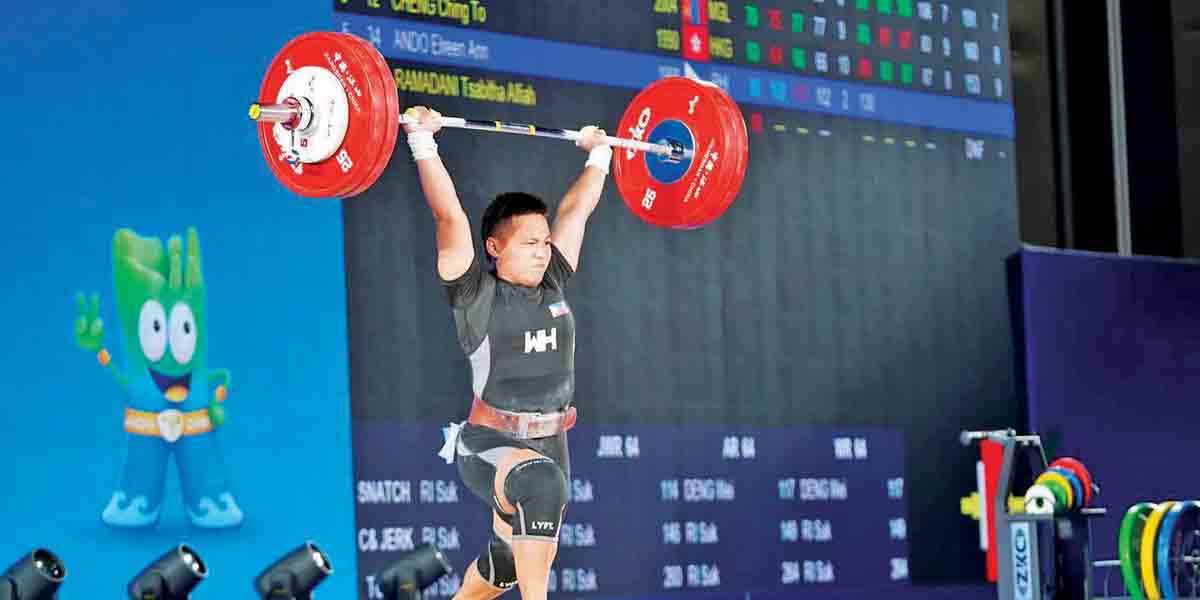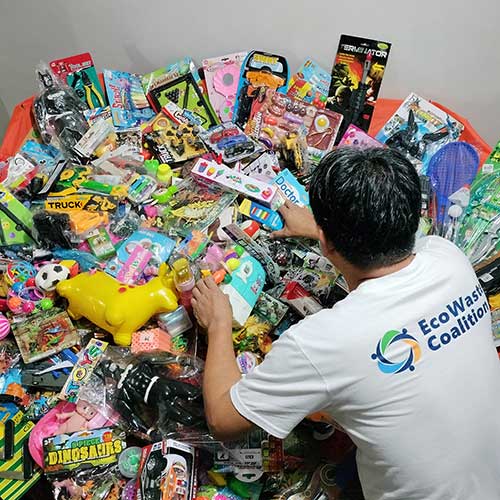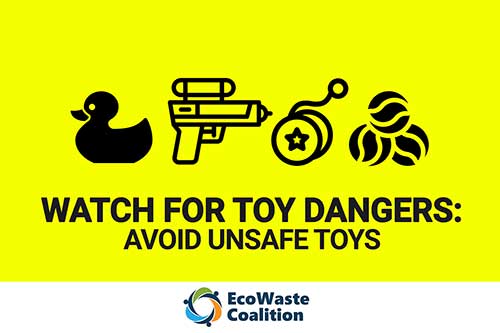As toys enjoy brisk sales with the fast approaching gift giving time of the year, the health and environmental organization EcoWaste Coalition urged consumers to make children’s safety against potentially hazardous toys a top priority.
The non-profit group, a vigilant advocate for non-hazardous toys for over 15 years, asked consumers to make full use of their legal rights to product information and product safety as they buy toys that kids will love this Christmas.
As embodied in Republic Act No. 7394, or the Consumer Act of the Philippines, it is the policy of the State to protect the interests of consumers and carry out measures that will provide information to consumers to facilitate sound choice and the proper exercise of their rights, including the protection against hazards to health and safety, as well as deceptive, unfair and unconscionable acts and practices.
“All children have the right to quality and safe toys that can support their development and make them explore, discover, learn, and be creative and happy,” the group emphasized. “Please be safety-conscious this Christmastime and beyond for our children’s health and future.”
To promote children’s health and safety, the EcoWaste Coalition released the following list of toys to avoid to prevent and reduce their exposure to potential hazards in some playthings:
- Avoid toys without age-grading and be guided by the age recommendation. Toys that are too small or too big or are not meant for a particular age group may cause injuries to a child.
- Avoid toys that are smaller than a child’s mouth and with small components or parts that can easily crack or detach, posing choking hazards.
- Avoid toys with sharp edges, which can cause cuts and lacerations.
- Avoid toys that shoot small or pointed objects into the air, which may inflict damage to the eyes.
- Avoid toys with cords or strings longer than 12 inches that may get tangled around the neck and suffocate the child.
- Avoid toys that are powered with button cell batteries in unsecured compartments, which can pose choking hazards and internal chemical burns. A child may also accidentally put these tiny batteries in the nose or ears.
- Avoid painted toys unless the paint used is certified lead-safe. Toys coated with leaded paints will peel off over time and get ingested by the child, causing lead exposure.
- Avoid toys made of polyvinyl chloride (PVC) plastic, which contains hidden toxic additives such as heavy metals like cadmium and lead, and phthalates.
- Avoid toys with parts made of black recycled plastics, which may contain hazardous substances from electronic waste or e-waste such as brominated flame retardant chemicals and toxic metals like cadmium and lead.
- Avoid art materials, toy cosmetics and toy jewelry that are not verified as non-toxic. Putty and slime toys containing excessive amounts of boron, for example, may cause a child to suffer from cramps, skin irritation and vomiting.
The group also reminded consumers to pick duly labeled toys with license to operate (LTO) number issued by the Food and Drug Administration (FDA), and, as much as possible, to buy them from legitimate establishments that issue official receipts, which can be used for filing complaints or for seeking a replacement, refund or warranty claim.




























